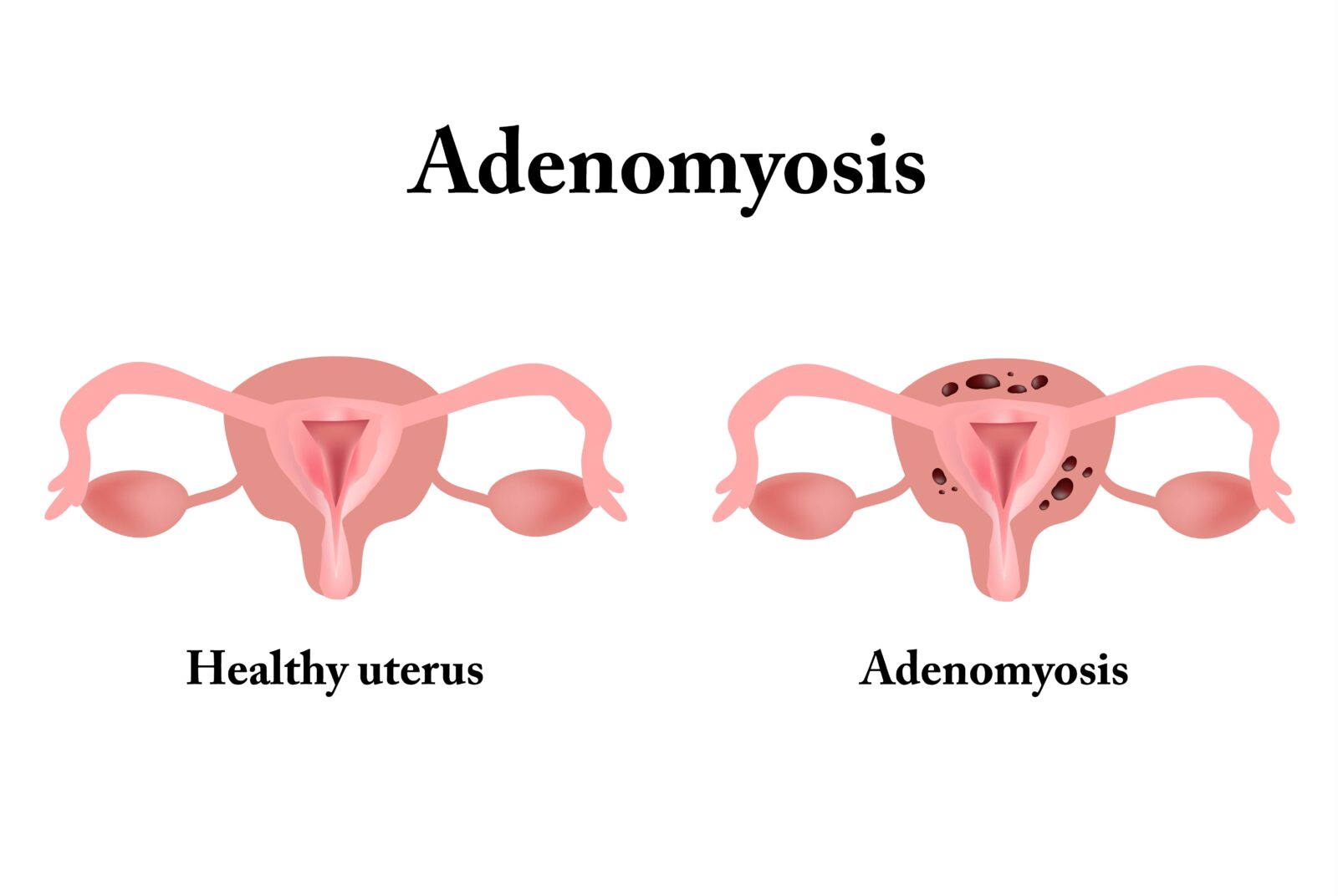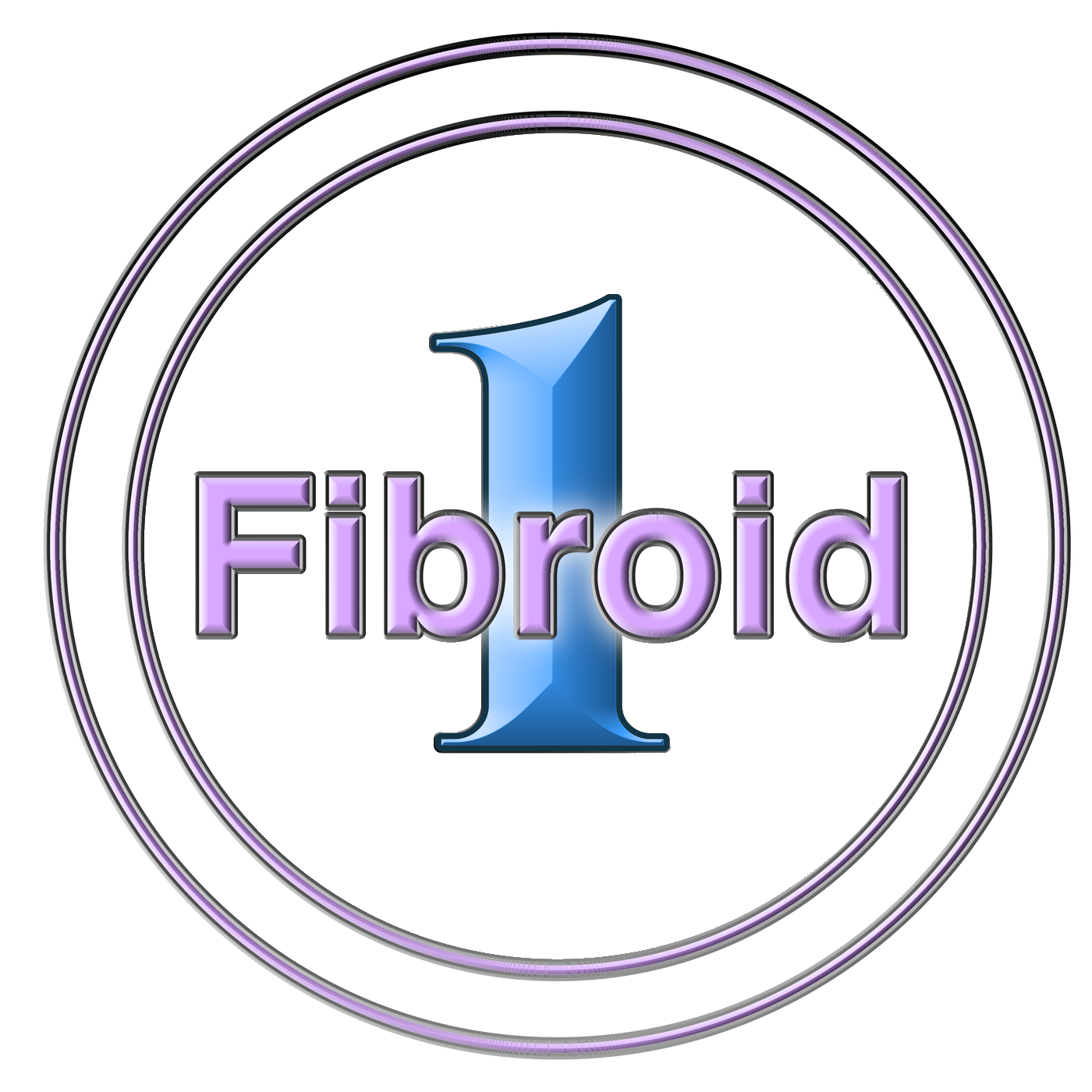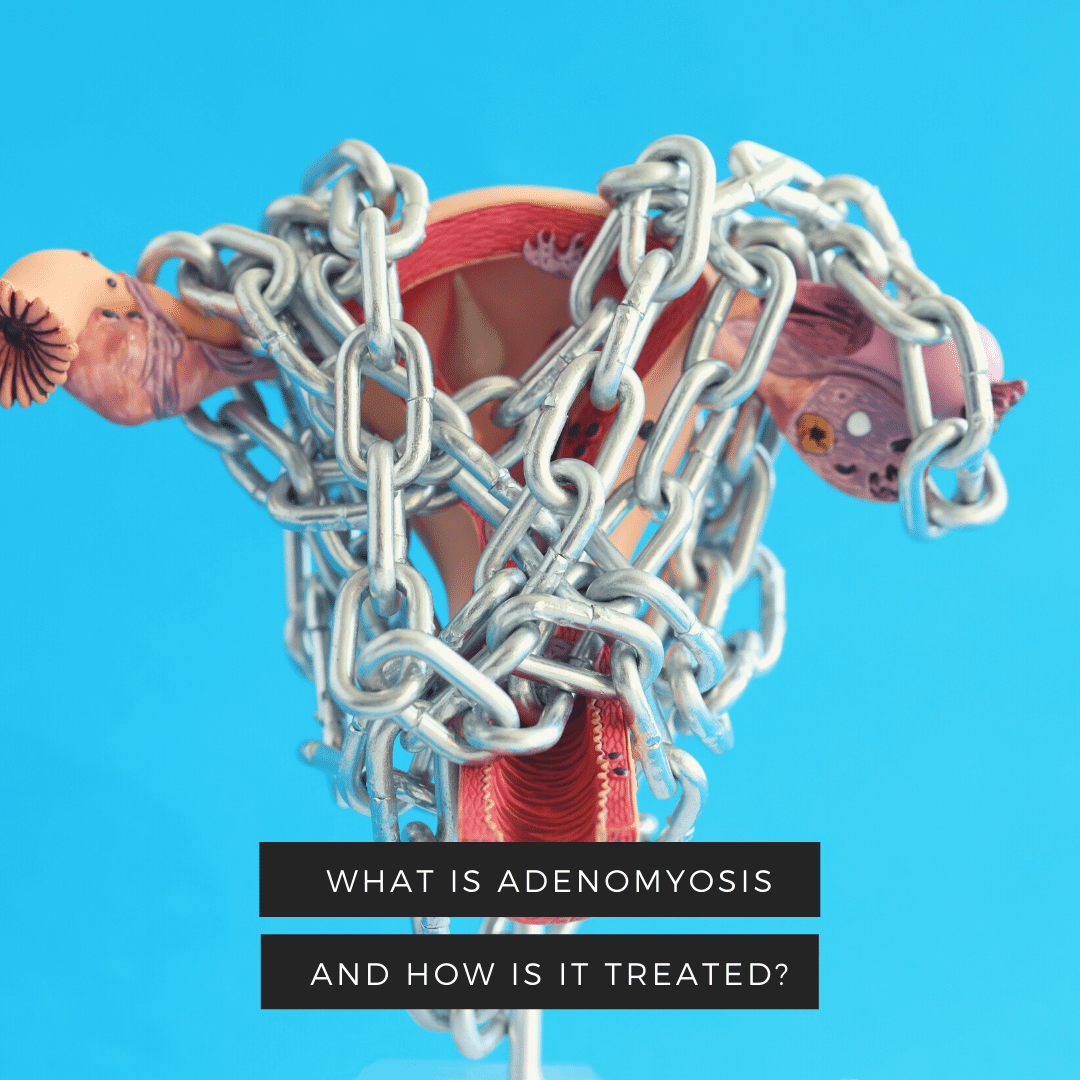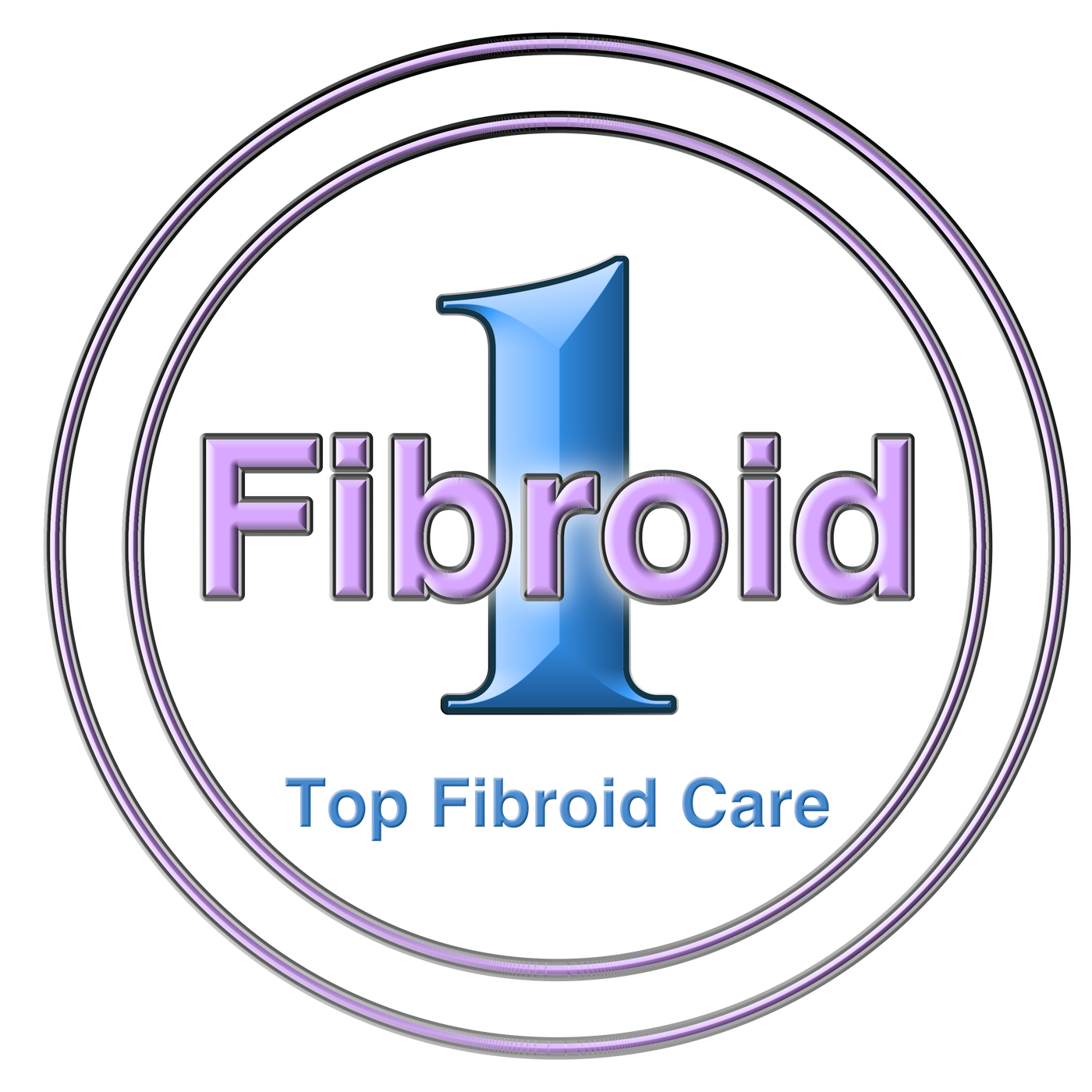Adenomyosis is a condition that affects the uterus. It’s commonly seen in women of childbearing age, and generally disappears after menopause. Adenomyosis causes pain in the lower abdomen and pelvis, as well as heavy periods and painful intercourse. In this blog, we’ll explain everything you need to know about adenomyosis and its treatment options.

What is Adenomyosis?
Adenomyosis is a condition in which the endometrium, the tissue that lines the uterus, breaks through and grows into the muscle wall of the uterus. This can cause pain and heavy bleeding during menstruation. Adenomyosis can also cause pain during sexual intercourse and make it difficult to get pregnant. It is believed that this condition is influenced by estrogen levels, which is why it tends to disappear after menopause when estrogen levels drop significantly.
What are the symptoms of Adenomyosis?
The main symptom of adenomyosis is pain. This can be either a dull, constant pain or a sharp, cramping pain that comes and goes. The pain is usually at its worst during menstruation and can make it difficult to do everyday activities. Other symptoms include:
- Heavy bleeding and/or blood clots during menstruation
- Painful menstrual cramps
- Pain during sexual intercourse
- Infertility
What causes Adenomyosis?
The exact cause of adenomyosis is unknown, but it is believed to be influenced by estrogen levels. This is why the condition is most common in women of childbearing age and generally disappears after menopause when estrogen levels drop significantly. In some cases, it is also believed that this condition can develop due to uterine inflammation after childbirth, C-section, or other types of uterine surgery.
How is Adenomyosis treated?
There are several treatment options available for adenomyosis. The best treatment option for you will depend on the severity of your symptoms and whether or not you want to become pregnant in the future.

Medications:
Medications can be used to relieve pain and heavy bleeding. Nonsteroidal anti-inflammatory drugs (NSAIDs), such as ibuprofen, are often used to treat the pain associated with adenomyosis. Hormonal birth control, such as the pill, patch, or ring, can also be used to treat adenomyosis. This works by lowering estrogen levels, which can help to reduce symptoms.
Ultrasound Surgery:
Ultrasound surgery is a minimally invasive procedure that uses sound waves to create heat that destroys specific tissues from the uterus. Early studies show this can help to relieve pain and heavy bleeding. However more research is needed.
Uterine Artery Embolization:
Uterine artery embolization is a minimally invasive procedure that blocks the blood supply to the uterus. This can help to shrink the endometrium and relieve symptoms.
Hysterectomy:
A hysterectomy is a surgical procedure to remove the uterus. This is the only absolutely certain way to eliminate symptoms, however it is usually only recommended if other treatment options have failed since it is a major surgery.
In Conclusion
In this blog, we’ve explained everything you need to know about adenomyosis: what it is, its symptoms, and its treatment options. If you think you may be suffering from this condition, be sure to talk to your doctor. They will be able to help you figure out the best course of treatment for your individual situation. Adenomyosis can be a difficult condition to deal with, but there are treatment options available that can help.












